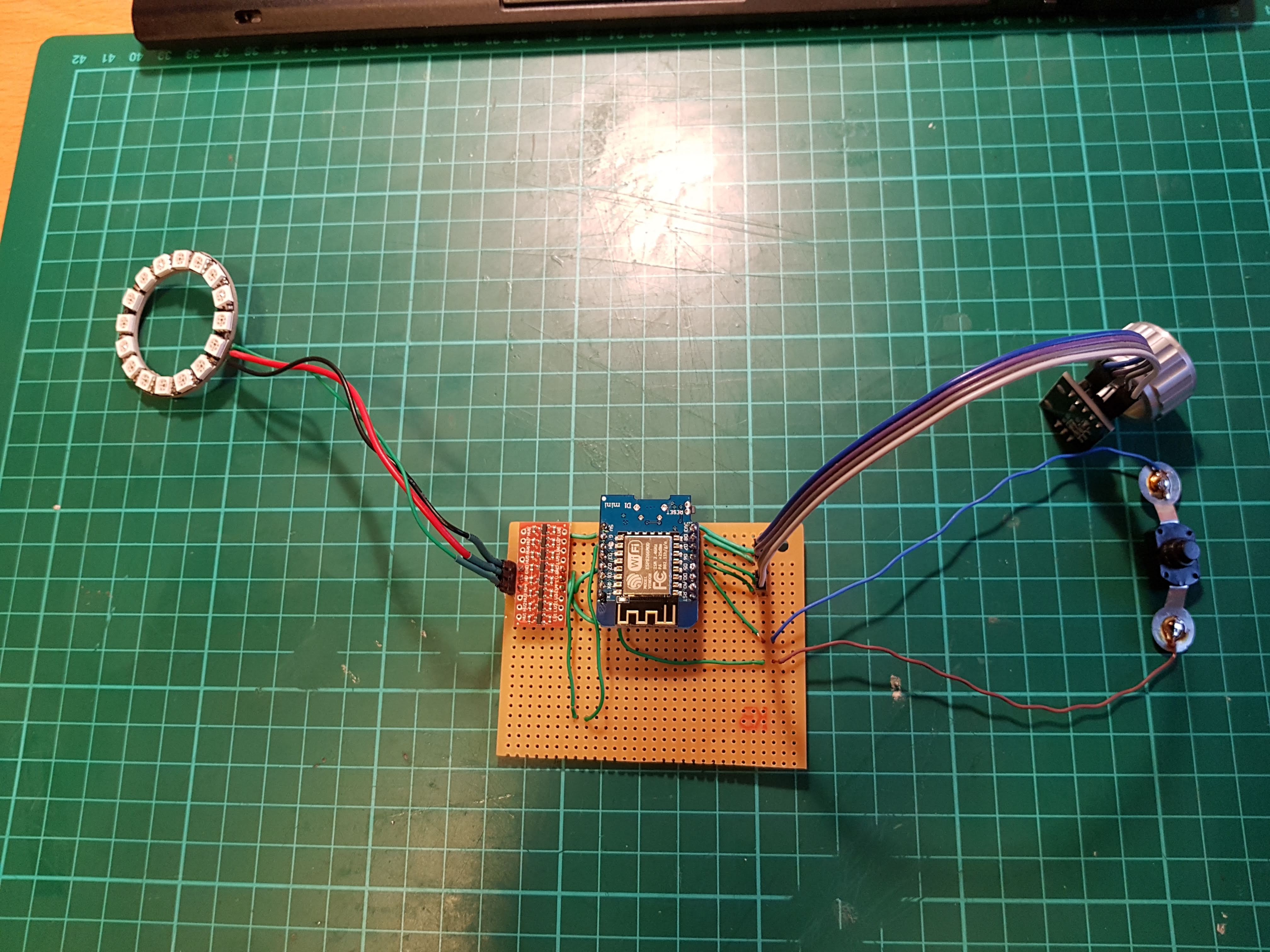My next step was to implement the hardware and prototype code on the microcontroller.
For the microcontroller I chose the ESP8266 because it's well documented and easy to use wifi capabilities. I wanted to try out micropython for this project. After flashing it into the ESP it was very straight forward to port my prototype code from my PC to the microcontroller. The only third party library I had to use was the micropython-stm-lib/encoder/ which I modified to be able to set the initial value of the encoder. To control the Neopixel ring I made a custom class which inherited from the built in Neopixel class.

After soldering everything up to a prototype board, it looked like this.
Since I wanted to make this project wireless I had to consider the power consumption as well, which was not great at this point. I implemented a MOSFET to turn off the Neopixel ring power when its not in use. The ESP8266 still consumed too much power in standby mode. After a bit research i found out about the ESP8266's DEEPSLEEP mode which is basically turns the microcontroller down completely. To wake it up you need to reset it what is usually done by hooking up the internal watchdog timer to the reset pin, but in my case i only needed to wake up the mcu when the encoder push button is closed. For this purpose I used the ATtiny85 mcu in sleep mode and used interrupts to wake it up. After it wakes up, forwards the next button presses to the ESP to change the chromecast device or stop the playback. With the interrupt handler/watchdog mcu and the MOSFET, the power draw dropped from 100-80 mA to 0.8 mA in standby.
According to my calculations, could run for 3 months with a single 18650 Li-Ion battery. This is great!
The next thing I was not happy with yet was the visualization. When I was changing the color on the LED ring the brightness was also changing, this was due to the neopixels non linearity. Quick search online I found a gamma correction table for these LEDs, which worked for me reasonably well. At first I divided the LEDs equally to represent the volume level from 0 to 100. Later I realized This was not very useful, because i was hard to tell the precise volume level just by looking at the ring. My solution was to use most of the LEDs to represent volume levels from 10 to 30 percent and to show 0 to 10 and 30 to 100 i used the remaining LEDs on the side. To distinguish between multiple Chromecast devices I assigned a color to each device and used the first LED on the ring to show that color.
At this stage I was almost happy with the software functionality, I started to design the PCB.
 Ákos Melczer
Ákos Melczer
Discussions
Become a Hackaday.io Member
Create an account to leave a comment. Already have an account? Log In.